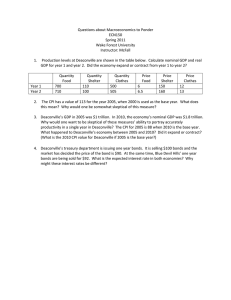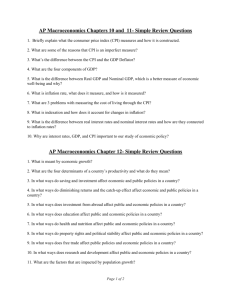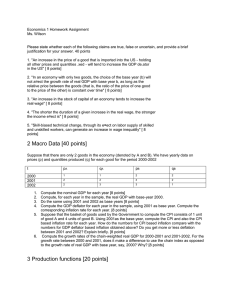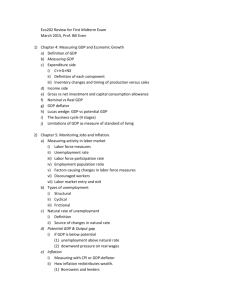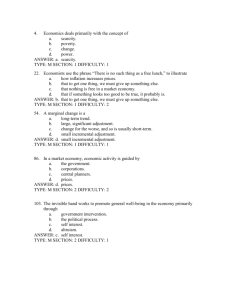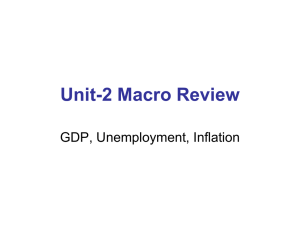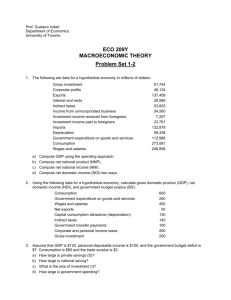Price Index Practice Problems | Economics
advertisement
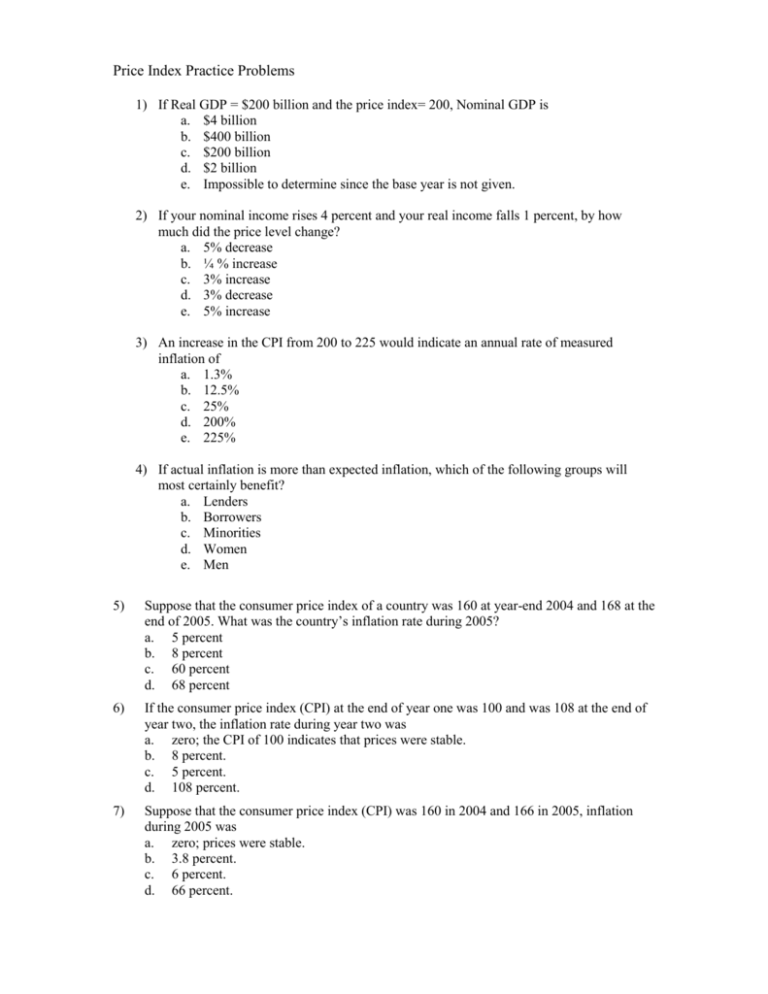
Price Index Practice Problems 1) If Real GDP = $200 billion and the price index= 200, Nominal GDP is a. $4 billion b. $400 billion c. $200 billion d. $2 billion e. Impossible to determine since the base year is not given. 2) If your nominal income rises 4 percent and your real income falls 1 percent, by how much did the price level change? a. 5% decrease b. ¼ % increase c. 3% increase d. 3% decrease e. 5% increase 3) An increase in the CPI from 200 to 225 would indicate an annual rate of measured inflation of a. 1.3% b. 12.5% c. 25% d. 200% e. 225% 4) If actual inflation is more than expected inflation, which of the following groups will most certainly benefit? a. Lenders b. Borrowers c. Minorities d. Women e. Men 5) Suppose that the consumer price index of a country was 160 at year-end 2004 and 168 at the end of 2005. What was the country’s inflation rate during 2005? a. 5 percent b. 8 percent c. 60 percent d. 68 percent 6) If the consumer price index (CPI) at the end of year one was 100 and was 108 at the end of year two, the inflation rate during year two was a. zero; the CPI of 100 indicates that prices were stable. b. 8 percent. c. 5 percent. d. 108 percent. 7) Suppose that the consumer price index (CPI) was 160 in 2004 and 166 in 2005, inflation during 2005 was a. zero; prices were stable. b. 3.8 percent. c. 6 percent. d. 66 percent. 8) If the consumer price index (CPI) was 180 at year-end 2004 and 189 at year-end 2005, inflation during 2005 was a. zero; prices were stable during 2005. b. 4.8 percent. c. 5 percent. d. 9 percent. 9) Suppose a market basket of goods and services costs $1,000 in the base year and the consumer price index (CPI) is currently 110. This indicates the price of the market basket of goods and services is now a. $110. b. $1,000. c. $1,100. d. $1,225. 10) The GDP deflator is designed to adjust nominal GDP a. for changes in the unemployment rate. b. for changes in prices. c. for problems that arise because of externalities. d. for changes in interest rates. 11) The typical bundle of goods and services on which the GDP deflator is based a. is narrower than the one used to calculate the CPI. b. is updated once every decade. c. is the same as the one used to calculate the CPI. d. is updated every year. 12) Assume that between 1995 and 2005, nominal GDP increased from $7 trillion to $12 trillion and that the price index rose from 100 to 133.3. Which of the following expresses GDP for 2005 in terms of 1995 prices? a. $7.5 trillion b. $9.0 trillion c. $9.5 trillion d. $16.0 trillion Use the table below to answer the following questions. Year 2000 2005 Nominal GDP (billions) GDP deflator 600 100.0 1,000 133.3 13) Between 2000 and 2005, the general level of prices increased by approximately a. 16.7 percent. b. 33.3 percent. c. 66.7 percent. d. 133.3 percent. 14) Measured in terms of 2000 prices, real GDP in 2005 was a. 600. b. 750. c. 900. d. 1,333. Answers: 1) b 2) e 3) b 4) b 5) a 6) b 7) b 8) c 9) c 10) b 11) d 12) b 13) b 14) b
